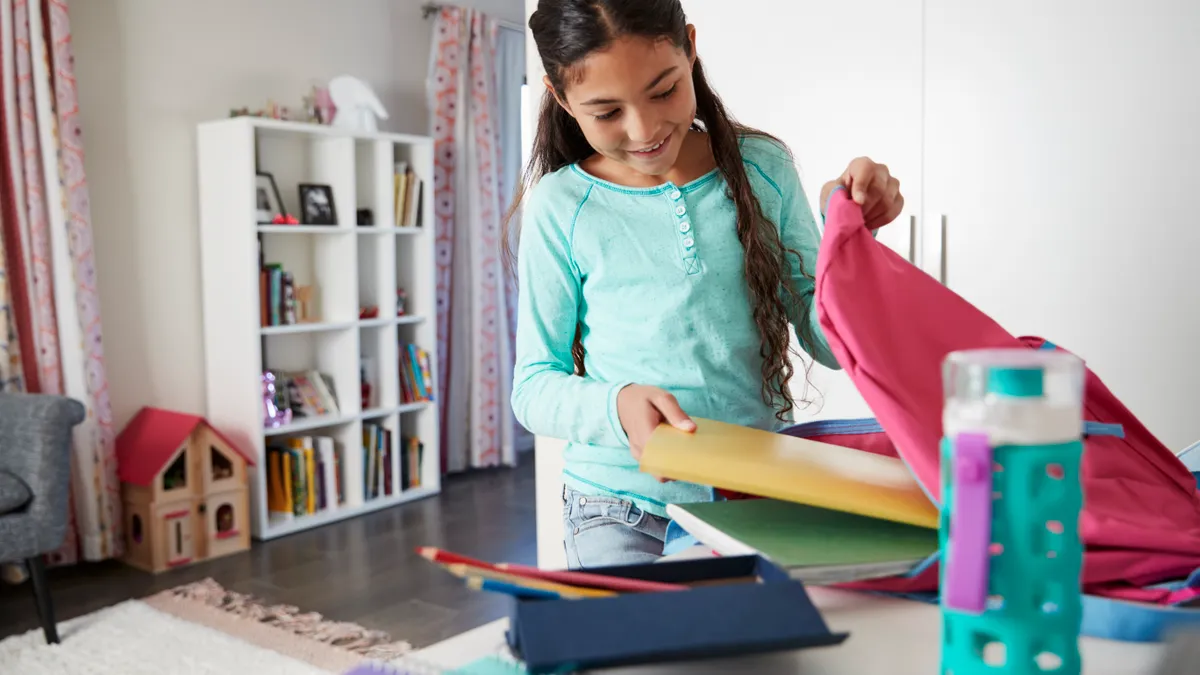The news today is overflowing with concerning reports about the negative impacts of climate change, and young people are at the forefront of the conversation. In one global study, 84% of teens and young adults said they were worried about climate change, and another study found that younger generations were more apt to name the climate as their top personal concern.
Schools are in a unique position to address those fears and help foster an environment dedicated to promoting a more sustainable future. “Young people are aware of how their actions affect the climate and want to be the ones actually driving change as advocates for sustainability,” says Dave Sklodowski, vertical market manager of the K-12 segment for Elkay®. He and his team work to provide schools with bottle-filling solutions that ensure students have on-demand access to cleaner, fresh-tasting drinking water in a way that reduces waste from plastic bottles.
Single-use plastic water bottles are a major culprit in waste pollution. While schools are actively trying to ensure students are adequately hydrated, the available tap water largely fails to meet standards for health and taste. In fact, a recent survey found only 28% of Americans prefer tap water, while 72% of respondents prefer bottled water. Yet, turning to single-use plastic bottles has created an epidemic of waste, leading schools to consider other options. Here is what you need to know when deciding how to provide students with cleaner, healthier water while reducing your school or district’s environmental impact.
Single-use plastics take a toll
Americans purchase about 50 billion water bottles per year, and about 60 million of those bottles are thrown away daily, according to the Container Recycling Institute. While the volume of waste is almost unfathomable, it’s only one of the damaging environmental effects of plastic bottles, notes Morgan Keck, sustainability manager for Zurn Elkay.
“When you consider the lifecycle perspective of plastic, it’s a very carbon- and water-intensive material to manufacture, so just creating the bottle contributes to climate change,” she says. “The water crisis itself is in addition to the harmful downstream issues caused by its disposal.”
That’s leading to a surge of interest in new solutions, such as bottle fillers that provide students and the staff with easy access to cleaner drinking water without having to buy bottled water. “Students want to be environmental warriors. Encouraging them to use bottle fillers and reusable bottles allows them to participate in the overall lifecycle solution,” she says.
Plastic jugs solve one problem, but create another
Some schools install jug water stations as a way to cut down on single-use plastics. This presents its own issues, which soon became clear to Miriam Jimenez, school operations manager at Equitas Academy #3, a charter school in Los Angeles. She turned to five-gallon jugs to provide her students with cleaner, healthier drinking water and to avoid relying on the school’s aging water infrastructure. However, this solution created an unintended environmental consequence: the proliferation of paper cups.
Although the school encouraged students to bring their own cups to school, many forgot. “That led to complete chaos of cups everywhere — all over campus and classrooms,” Jimenez says. While recycling had always been a focus for the school, it became even more top of mind when it instituted a program designed to comply with California state regulations requiring recyclables to be separated from compostable items and general trash. During this project, students were immediately confronted with the extent of the waste those cups generated.
Jimenez investigated other options and installed Elkay’s bottle fillers schoolwide. The company also provided refillable water bottles for students to personalize with stickers in the hopes of making the kids feel more attached to their individual bottles — one more way to help them remember to bring their bottles to school. “Not seeing their building trashed with cups has been really helpful because they can see the difference that they're making,” Jimenez says.
Saving green by going green
Installing bottle fillers can play a role in a school’s overall conservation habits beyond waste reduction. For example, the Elkay products use a built-in sensor and a timer feature to help avoid water overflow. In addition, Keck notes that Elkay bottle fillers are designed to get more water into the bottle. “That makes them far more efficient for filling up a bottle than a traditional drinking water fountain,” she explains.
And while the main financial benefit of less water consumption is noticeable in a school or district’s water bills, it extends to other energy consumption as well. “When you're using less water, it typically leads to a reduction in electricity or natural gas usage, so conservation can positively impact a school's overall utility bills,” Keck says. That savings can free up much-needed funds in the operating budget.
Jimenez saw a direct cost benefit at Equitas Academy #3 after installing bottle filling stations. The school saved over $13,000 in the first six months, allowing staff to reallocate funds to other uses, such as transportation for field trips.
A clear benefit for schools
During school visits, Sklodowski is heartened by students’ pride in their reusable water bottles and commitment to doing their part to address climate change. “Reducing plastic waste and conserving water dovetails with the messages students are learning in schools about climate change and the impact they can have,” he says.
Bottle fillers are an all-around eco-friendly solution because they touch all aspects of the sustainability lifecycles, Keck points out. “They address climate change and water savings when it comes to the production of single-use plastic, and then the waste side with the reduction of bottle trash. It’s easy for schools to make a big difference with a small change.”
Are you interested in how your school or district can help encourage your students to do their part to contribute to a more sustainable future? Visit Elkay.com today for more information about how you can cost-effectively add Elkay bottle fillers for cleaner, healthier water and a better environment.










